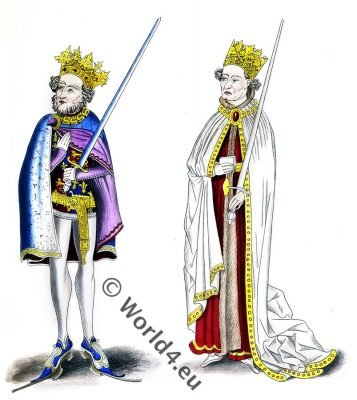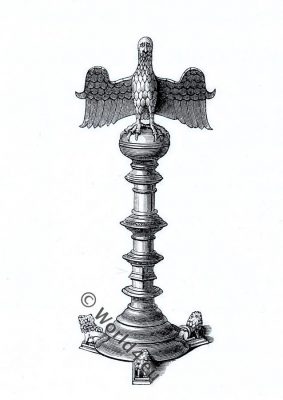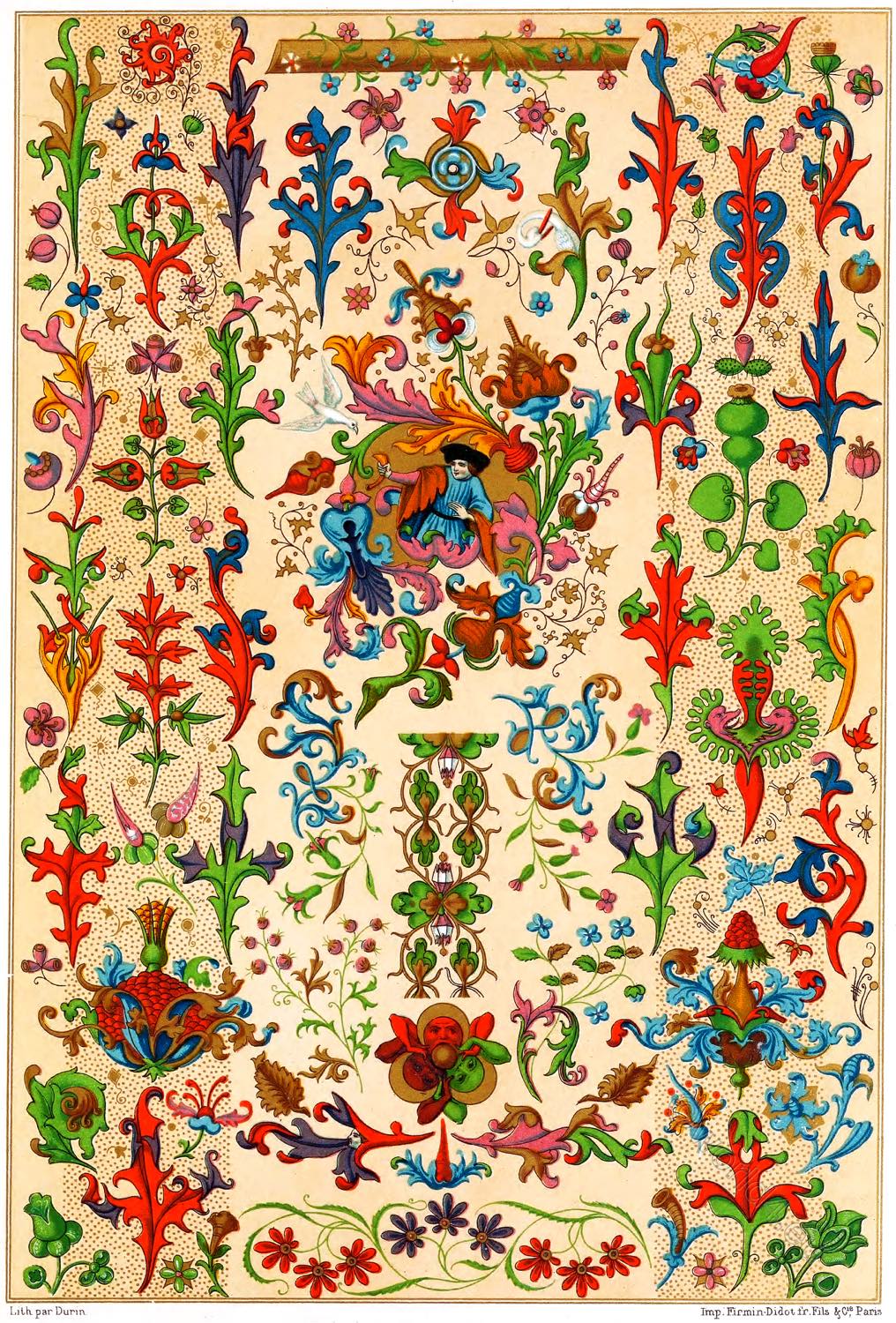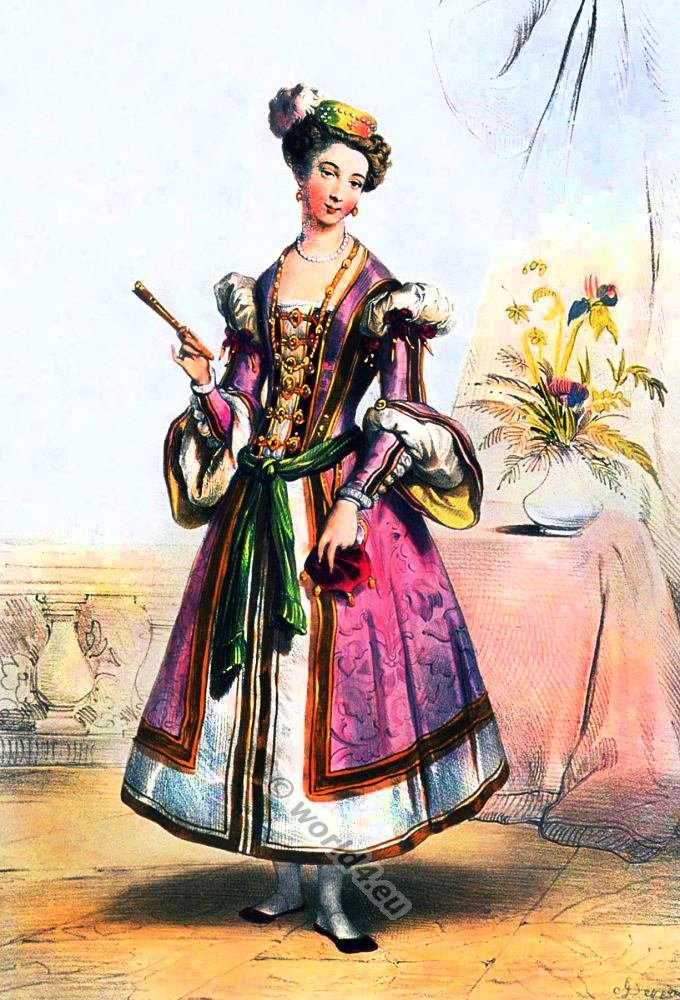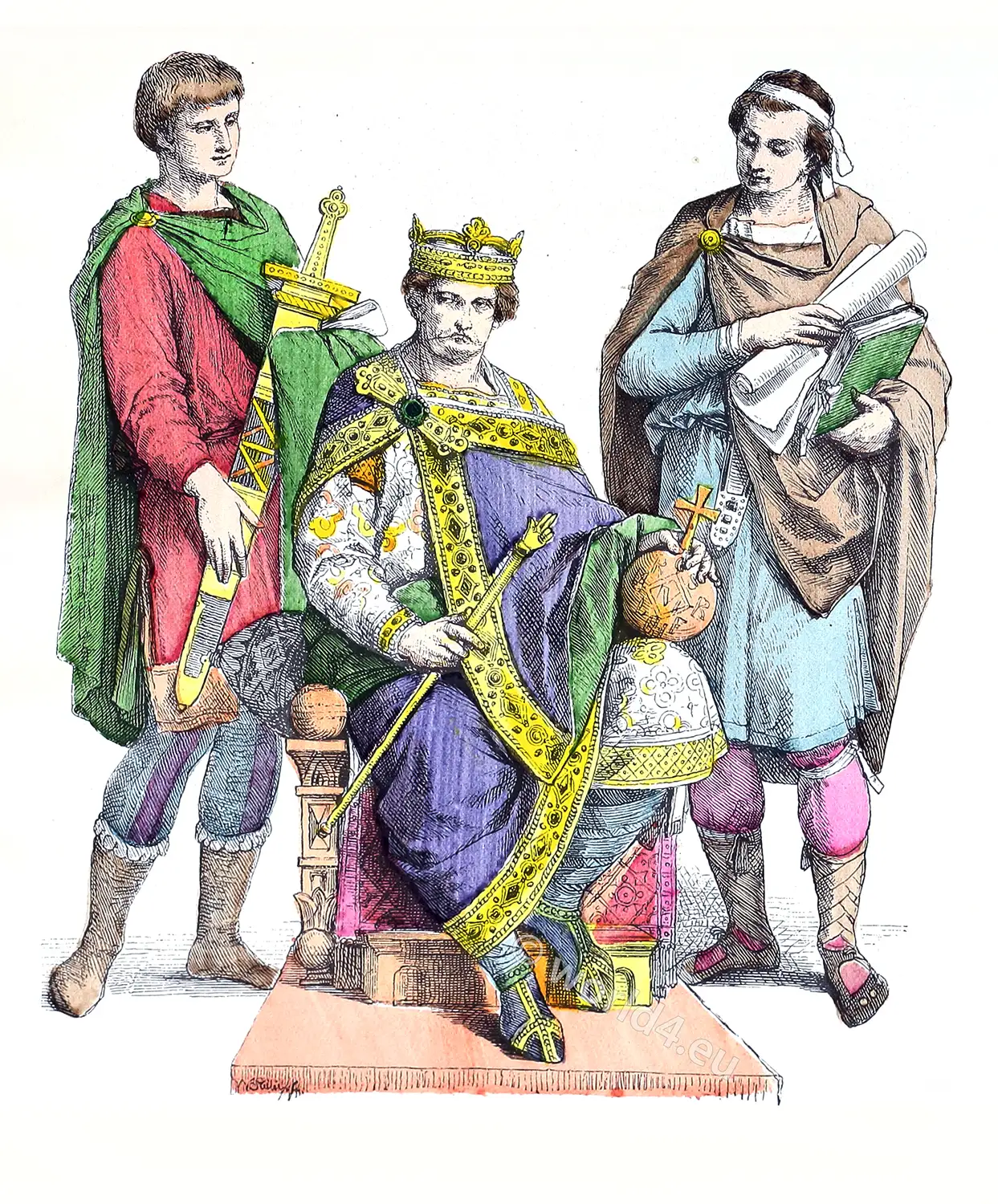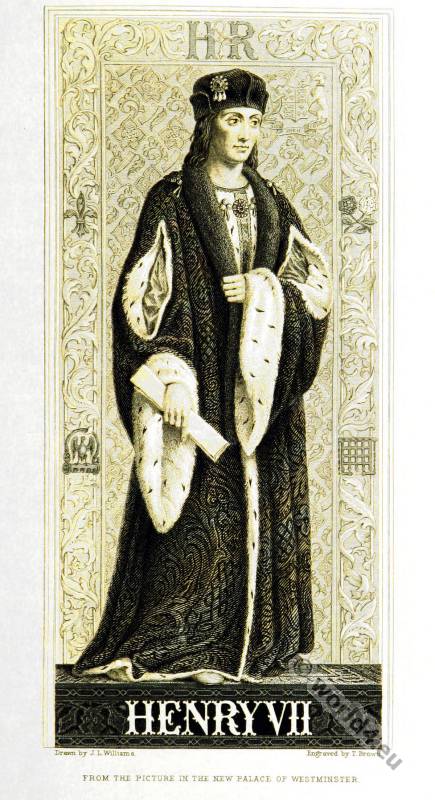English kings Henry I and King John.
 IN one of the Cottonian manuscripts (Julius, E. IV.), a brief metrical chronicle of the kings of England, which has been attributed to John Lidgate (1), and which was composed soon after the 10th Hen. VI., is illustrated by a series of singular and bold drawings of the monarchs whose reigns it commemorates. Two of these figures are given on the accompanying plate, which were intended to represent Henry the First and King John. The costume of King John is rather remarkable, particularly the high clogs which he has on his feet.
IN one of the Cottonian manuscripts (Julius, E. IV.), a brief metrical chronicle of the kings of England, which has been attributed to John Lidgate (1), and which was composed soon after the 10th Hen. VI., is illustrated by a series of singular and bold drawings of the monarchs whose reigns it commemorates. Two of these figures are given on the accompanying plate, which were intended to represent Henry the First and King John. The costume of King John is rather remarkable, particularly the high clogs which he has on his feet.
The poem which these figures illustrate is curious, and appears to have been very popular, by the numerous copies which are found in manuscripts of the fifteenth century. It was printed by Thomas Hearne, in the appendix to his edition of Robert of Gloucester.(2) An extract or two from the descriptions of the reigns of the two kings, whose figures are here given, will convey to the general reader an idea of its style and character. Of King Henry, the writer tells us,-
“He made statute, with gode rede,
That thevis thrugh hangynge schuld be dede.
Anothir he made anon right,
That money makers schuld lese hir sight.”
The characteristics of John’s reign were the interdict and the civil war:-
“In Jonis time, as I undirstond,
Was interdited alle Engelond.
He was fulle wrothe and gryme,
For prestis wuld not singe bifor him.
* * * *
In his time was a grete dirthe,
Xij. pens an halfe-peny lofe was wurthe.
Thanne he made a parlement,
And swere in angre verament
That he wuld make such a sauwte.
To fede all Englond with a spawde.
A monk anon therof hirde,
And for Englond was sore aferde;
A poysone than he ordenyd anone,
So was he poysoned, and deied ryght sone.”
The elegant reading desk at the end of the present article, was, about the year 1750, dragged out of the deep part of the lake at Newstead, and is now preserved in the collegiate church at Southwell in Nottinghamshire, having been purchased by Sir Richard Kaye, in 1778, and presented by his widow to the chapter. It is made of brass, and was sent by them to a clockmaker to be cleaned, who observed that it was composed of several pieces, which might be taken apart. On unscrewing these, the boss was found to contain a number of parchments, most of which were deeds and grants connected with the abbey of Newstead.
Among the rest, was a pardon granted by King Henry V. on some occasion to the monks, and, as was common with such documents, worded so generally as to include every kind of offence that it was probable that the monks might be accused of having committed, previous to the date at which the pardon was granted. Such deeds were often necessary to protect the monks against the rapacity or malice of their neighbours.
Washington Irving, who has described this reading desk in his little volume on “Abbotsford and Newstead Abbey,” has entirely misunderstood the nature of this document, and represents it as an indulgence to the monks to commit crimes with impunity. There can be little doubt that this desk, which was used in the chapel of the abbey to read the Litany from, was thrown into the lake by the monks, probably at the time when the dissolution of monasteries was first threatened, in the hope that by this means their titles would be preserved until the storm should be blown over; and they never returning to recover it, it had remained beneath the water during more than two centuries.
The initial letter on the preceding page is taken from a copy of Jenson’s Edition of Pliny, 1476, in the possession of Mr. Pickering. The specimen of arras is from a MS. in the British Museum, Harl. 4380.
Source: Dresses and Decorations of the Middle Ages by Henry Shaw F.S.A. London William Pickering 1843.
1 John Lydgate (c. 1370 – c. 1451) was an English monk and poet.
2 (Robert, 1. Earl of Gloucester c. 1100 – 1147, was an illegitimate son of the English King Henry I and one of the most prominent figures of the English Civil War from 1135 to 1154. He was also known as Robert de Caen and Robert the Consul.)
Related to:
Byzantine, Medieval, Gothic, Burgundian.
- Anglo-Saxon fashion history. England c. 460 to 1066.
- The Norman fashion period. England 1066-1154.
- Fashion history of medieval England 12th, 13th c.
- The Barbarian Invasions. The Migration Period. (Historical Atlas)
- The Gallic and Gallo-Roman costume period. 3rd to 4th century
- Byzantine costume history. 5th to 6th century.
- Frankish Merovingian costume history. 4th and 5th century
- Carolingian Period 752-987. Reign of Charlemagne.
- The Carolingian Fashion Period 987 to 1270.
- Europe in the time of Charles the Great 768 – 814. (Maps, Places).
- The Corset and the Crinolin. Fashion history from Ancient until 19th century.
- 11th to 13th century. French fashion history.
- 11th to 13th century. German fashion history.
- 11th to 15th century. Caps and Hoods fashion.
- 13th century. French male fashion history.
- 14th century. German fashion history.
- 15th century. German male fashion history.
- 15th century. German female fashion history.
- 14th, 15th century. Italian fashion history.
- Eleanor of Aquitaine, Medieval Queen in the 12th century. Fashion history.
- Eleanor of Castile first wife of King Edward I. England 13th century
- Reigns of John and of Charles V. 1350 to 1380. (Medieval, Byzantine, Gothic)
- Reigns of Charles VI. and Charles VII. 1380 to 1461. (Medieval, Gothic, Burgundy)
- Headdresses of the 14th Century.
- Headdresses of the 15th century. The Hennin.
- Headdresses 15th century. The Reticulated Headdress.
- The Influence of the Crusaders to the French clothing. 13th to 14th century.
- The Knights Hospitallers. The First Crusade. 11th century.
- The Knights of the Teutonic Order of Knighthood. History of German Crusaders 12th century.
- The Crusades. The Knights Templar. Medieval military religious order. 12th century.
- Syria during the period of the crusades. Maps, Names, Places. Historical Atlas.
- Life-size warrior figures in full armor and equipment. Greek, Roman, Gallic, Merovingian, Carolingian.
- Armor in England from the 10th to the 18th century
- The Rise of Monachism. Monastic costumes history.
- The Romance of the Rose. The Art of courtly love.
- The Lady of Tournament delivering the Price.
- On the history of costumes. From Ancient until the 19th century.

